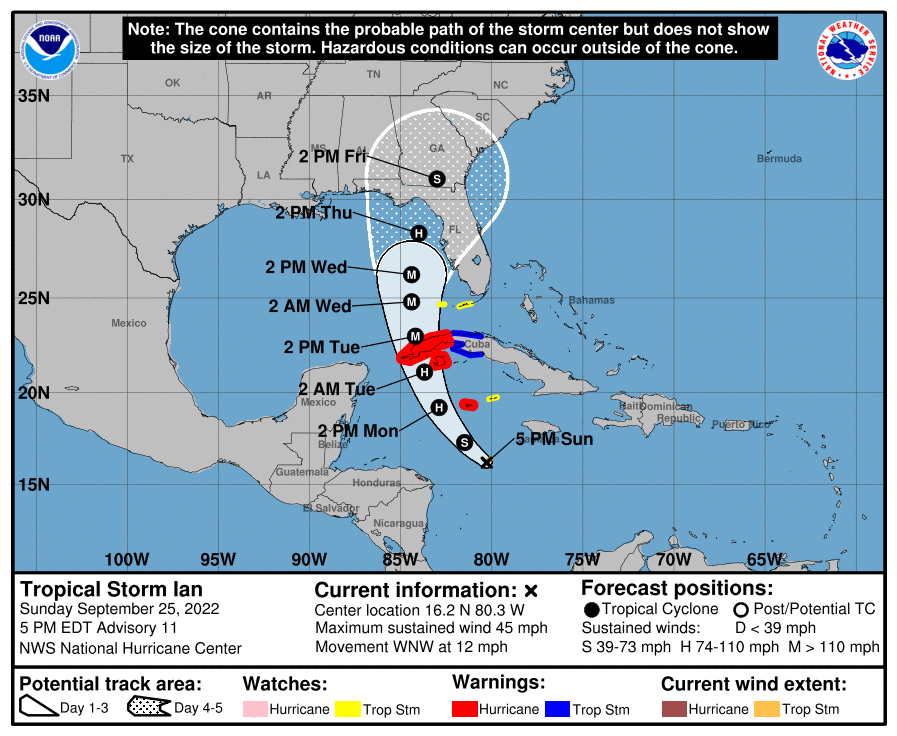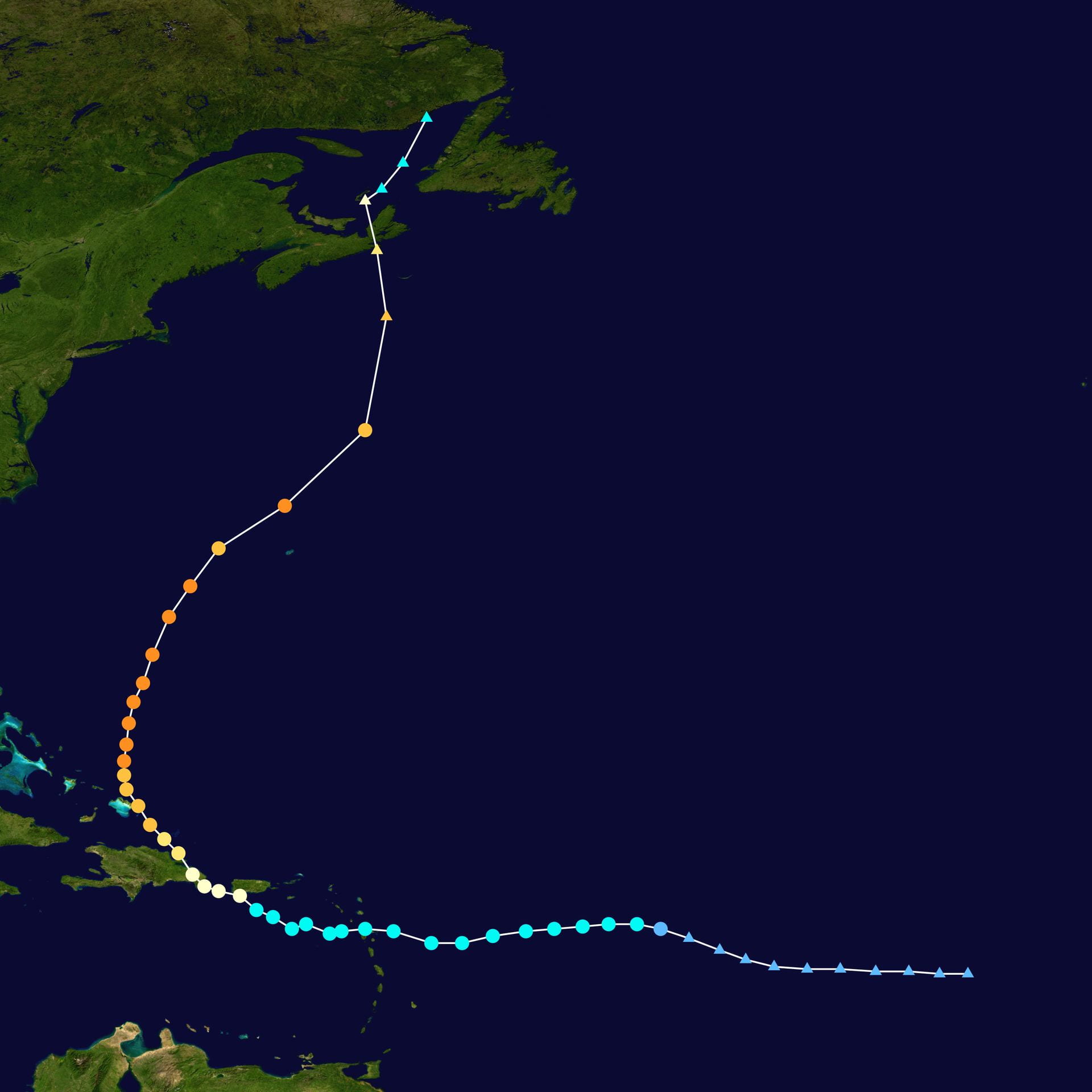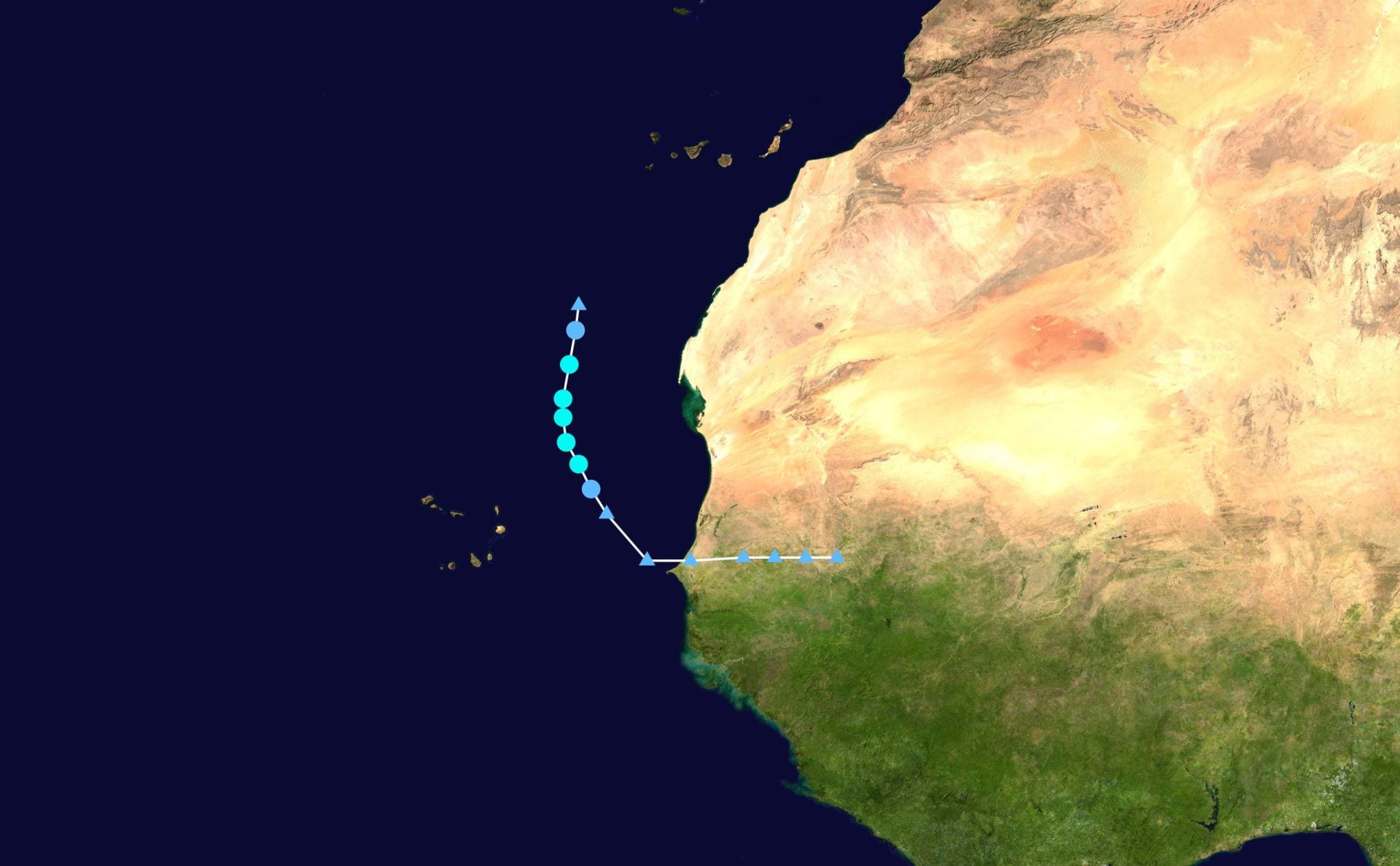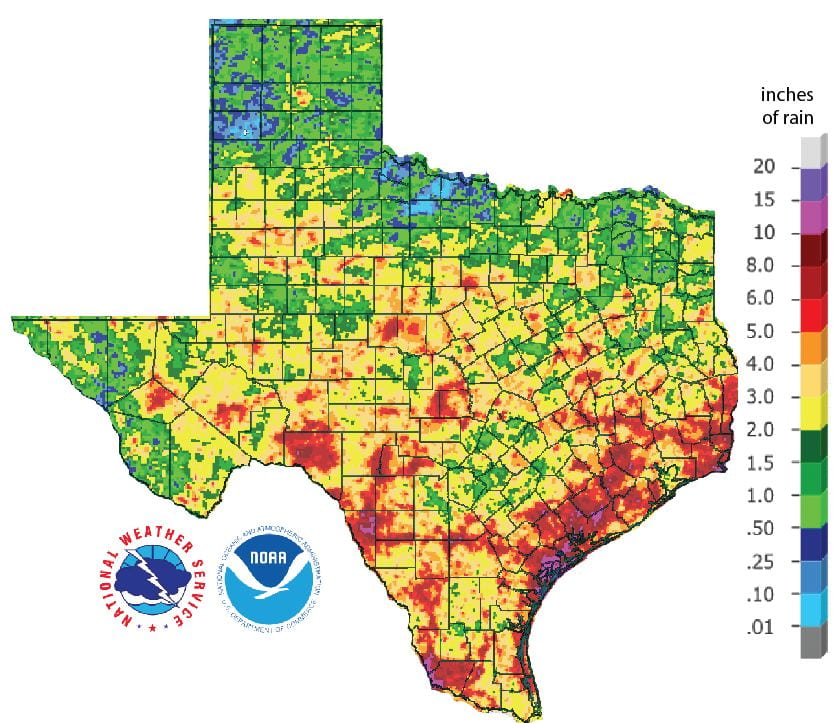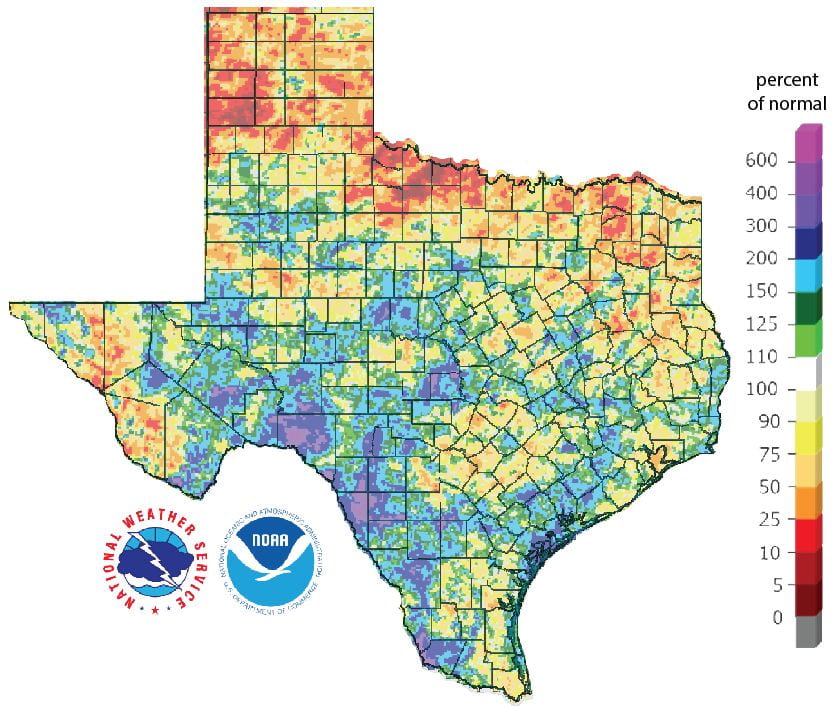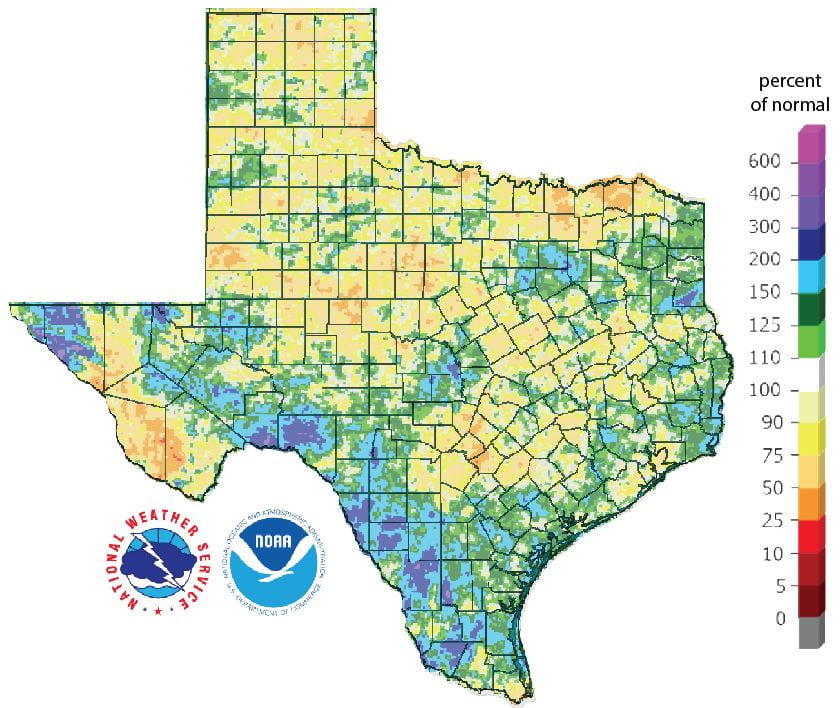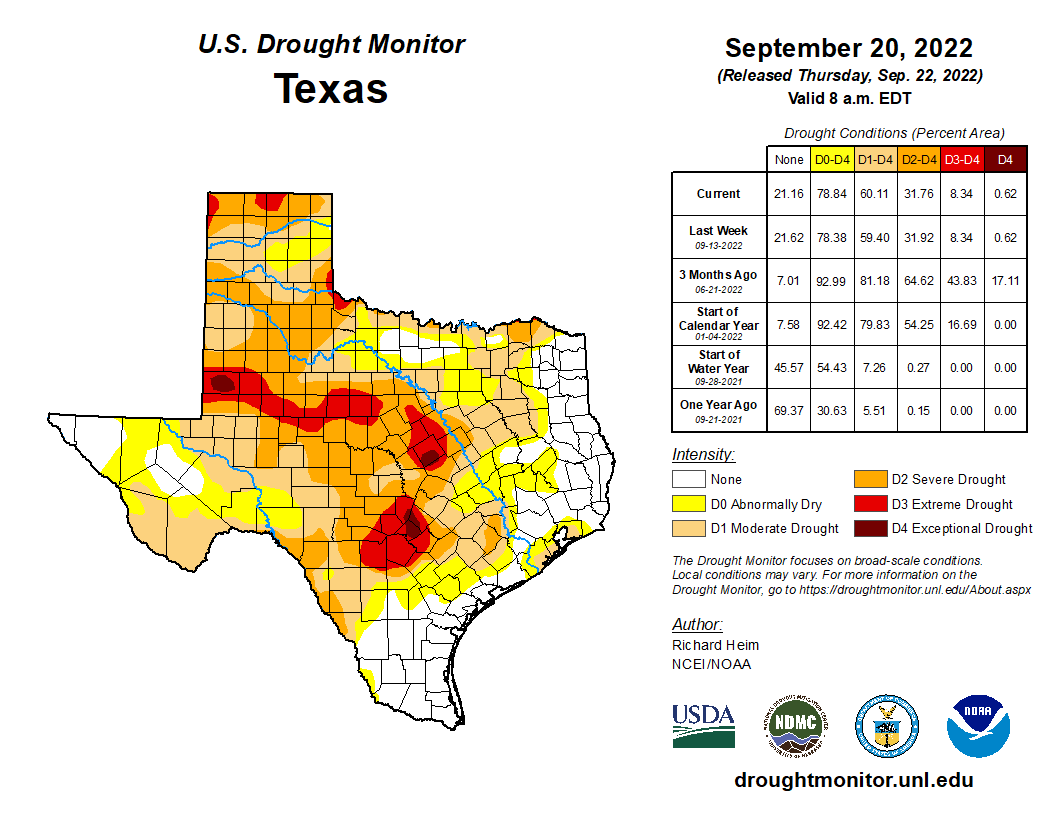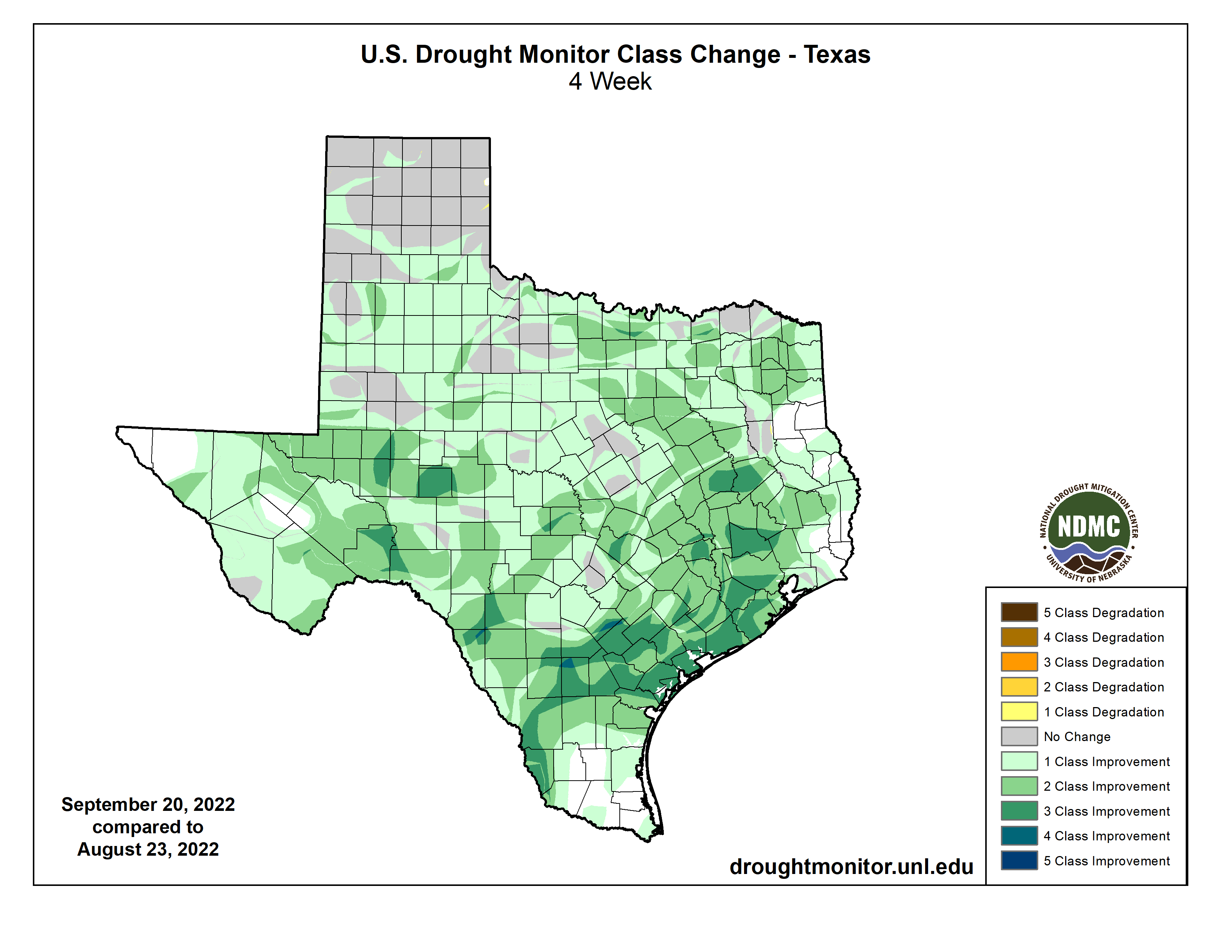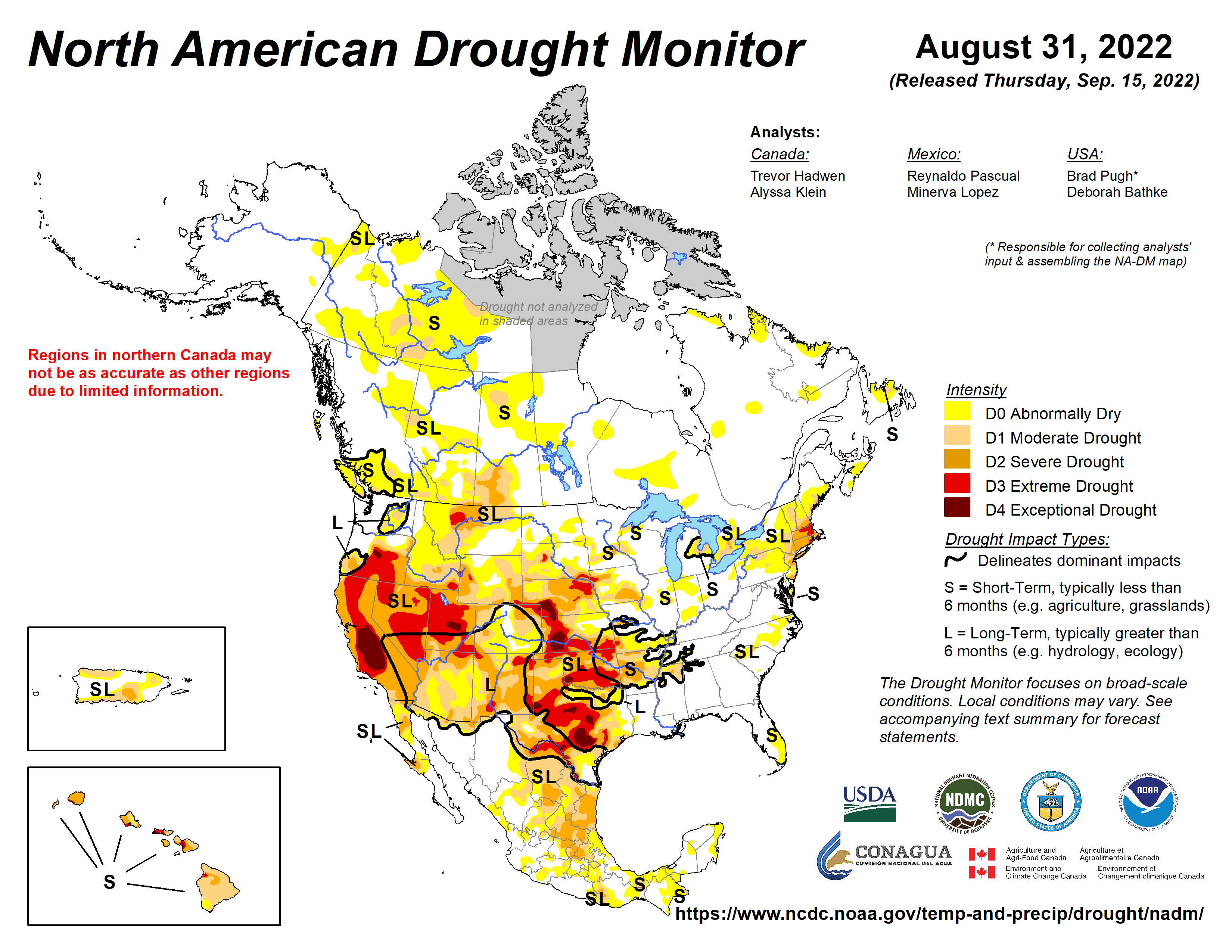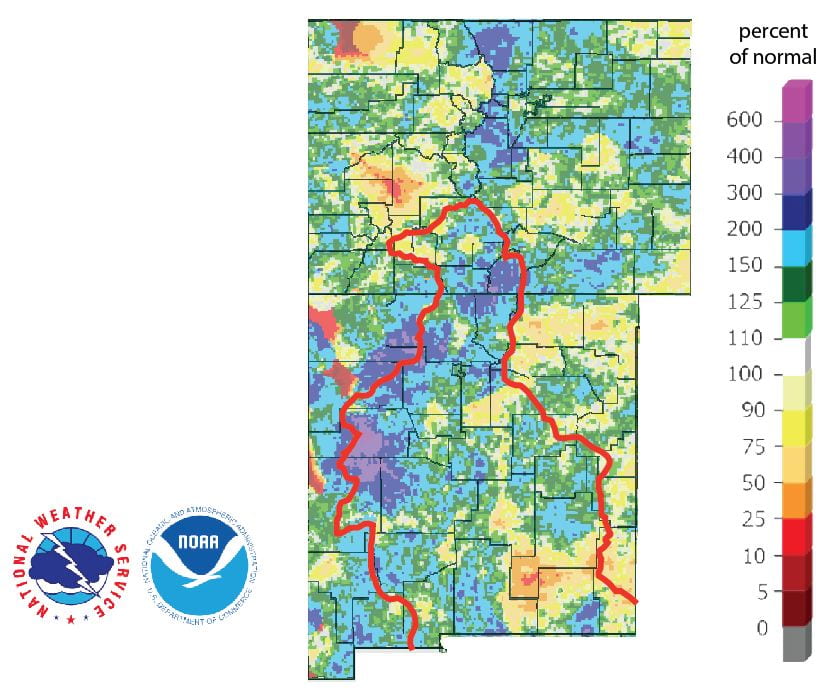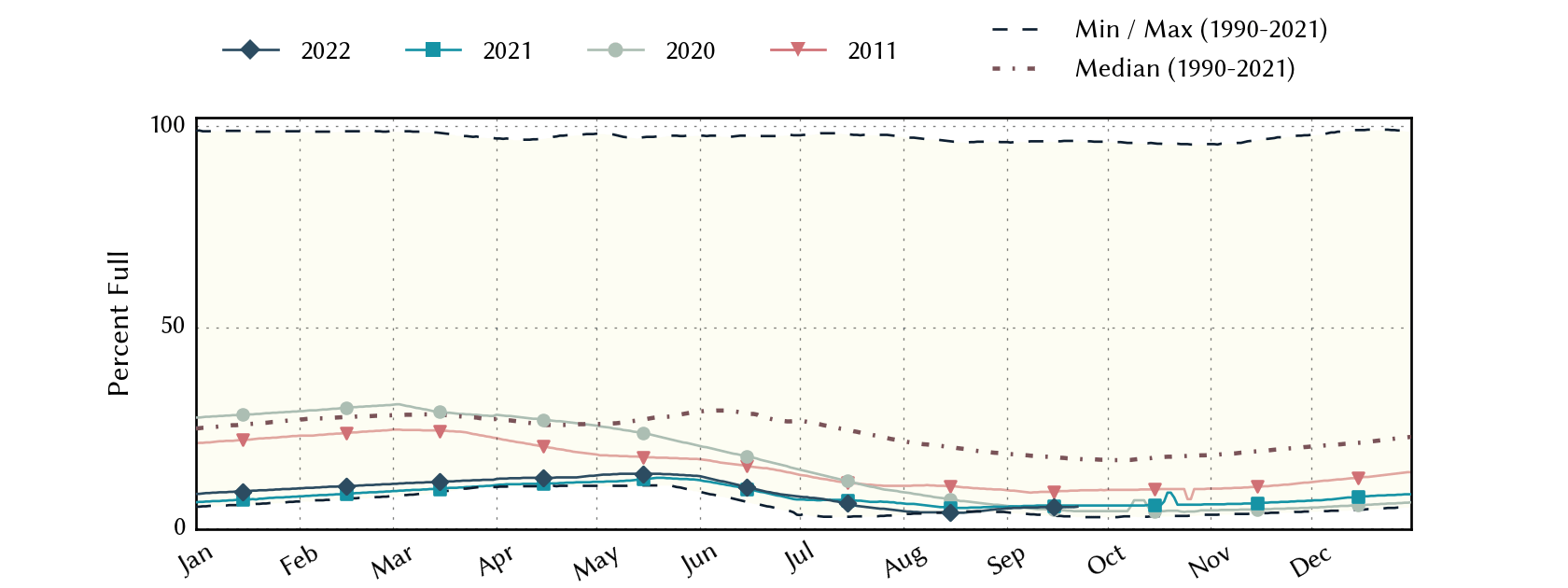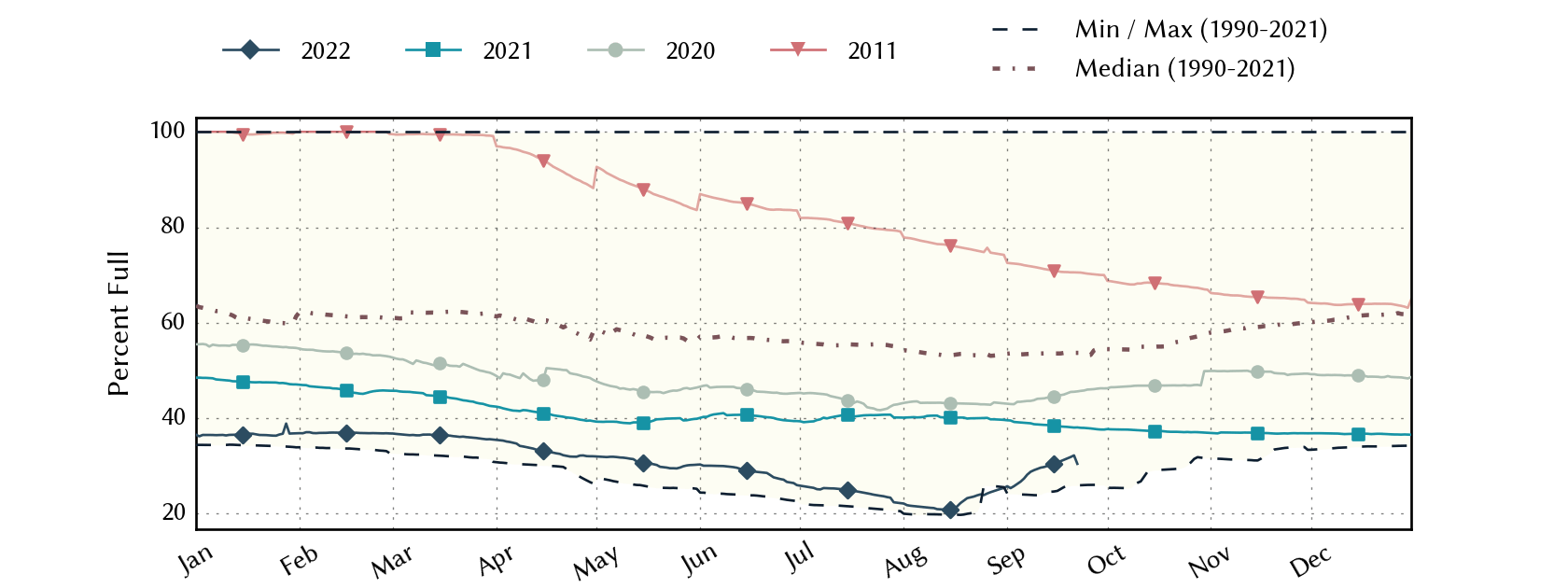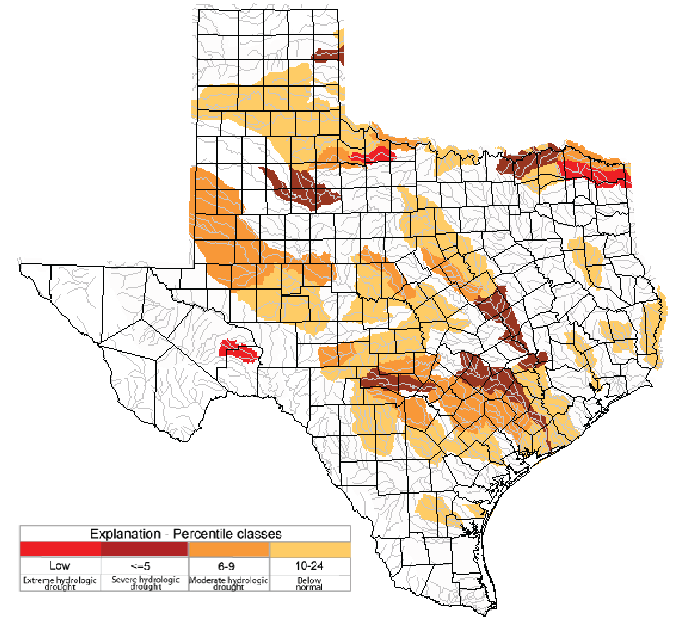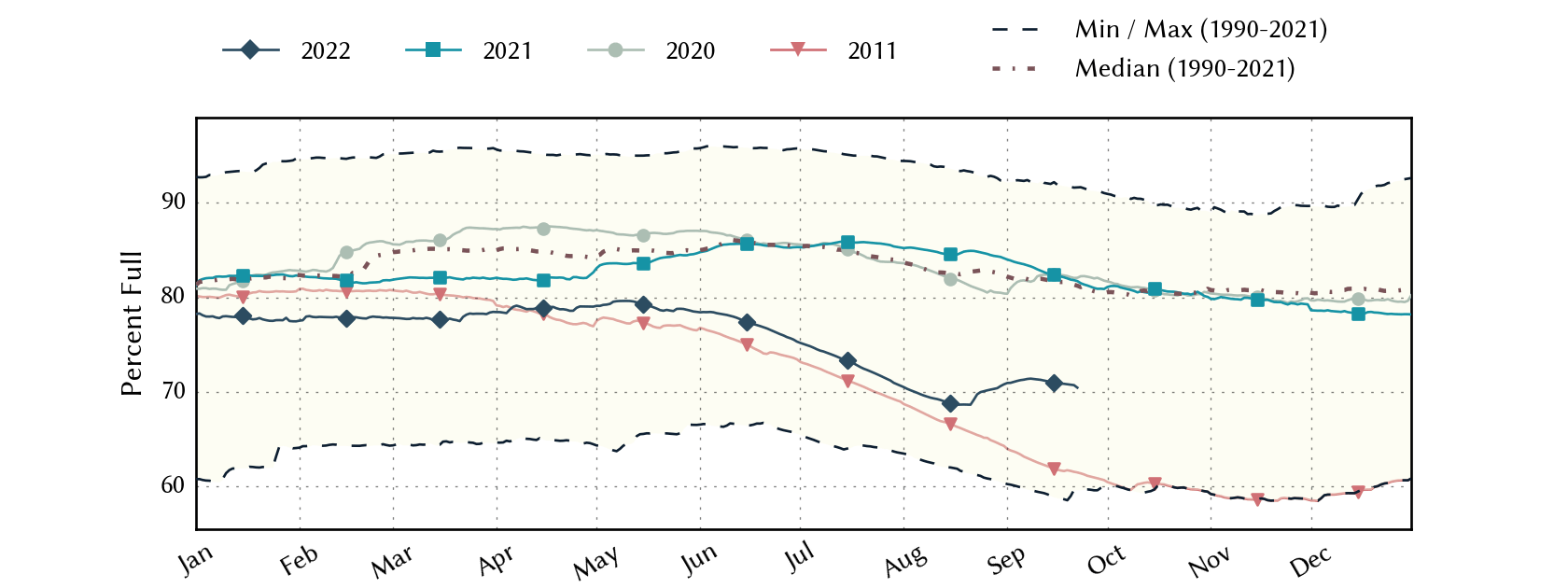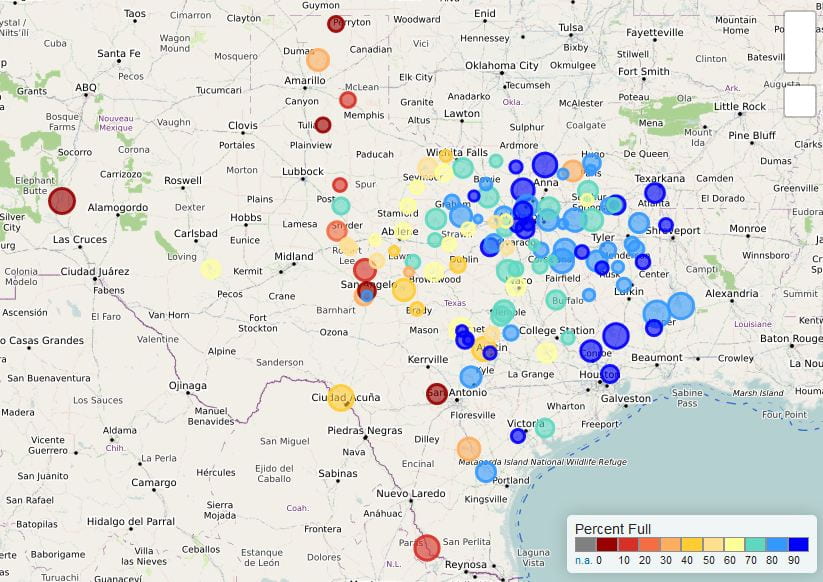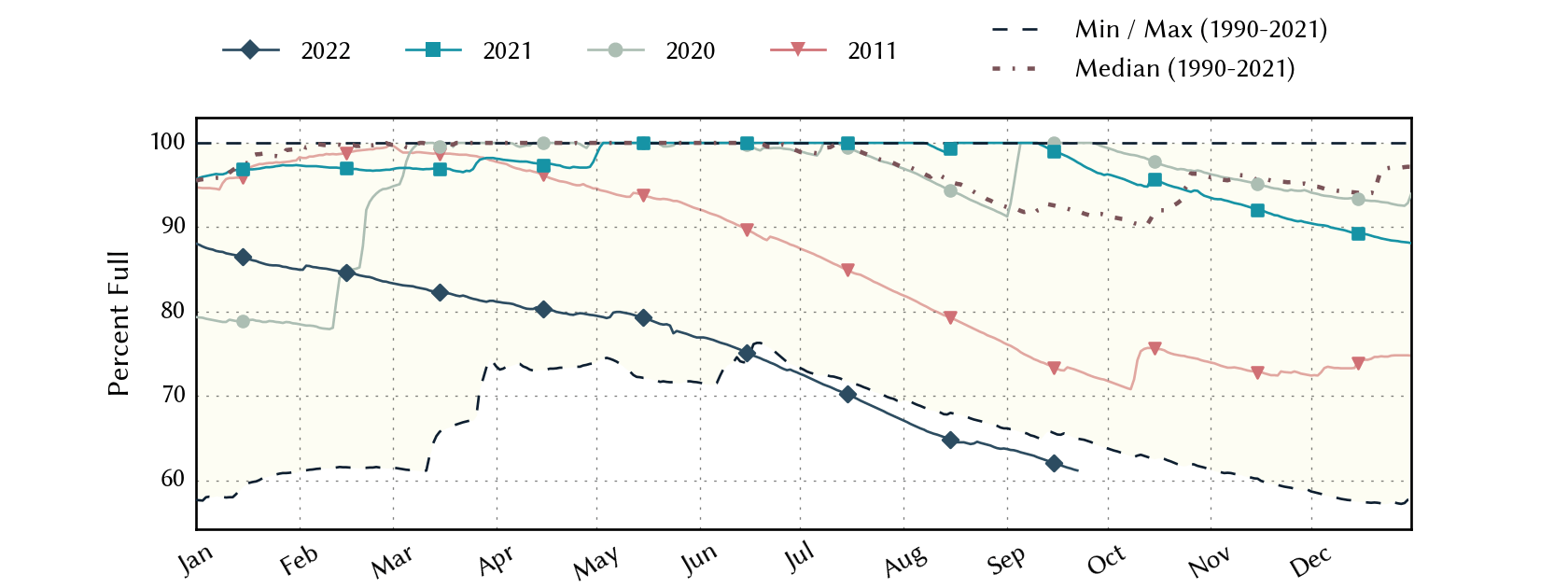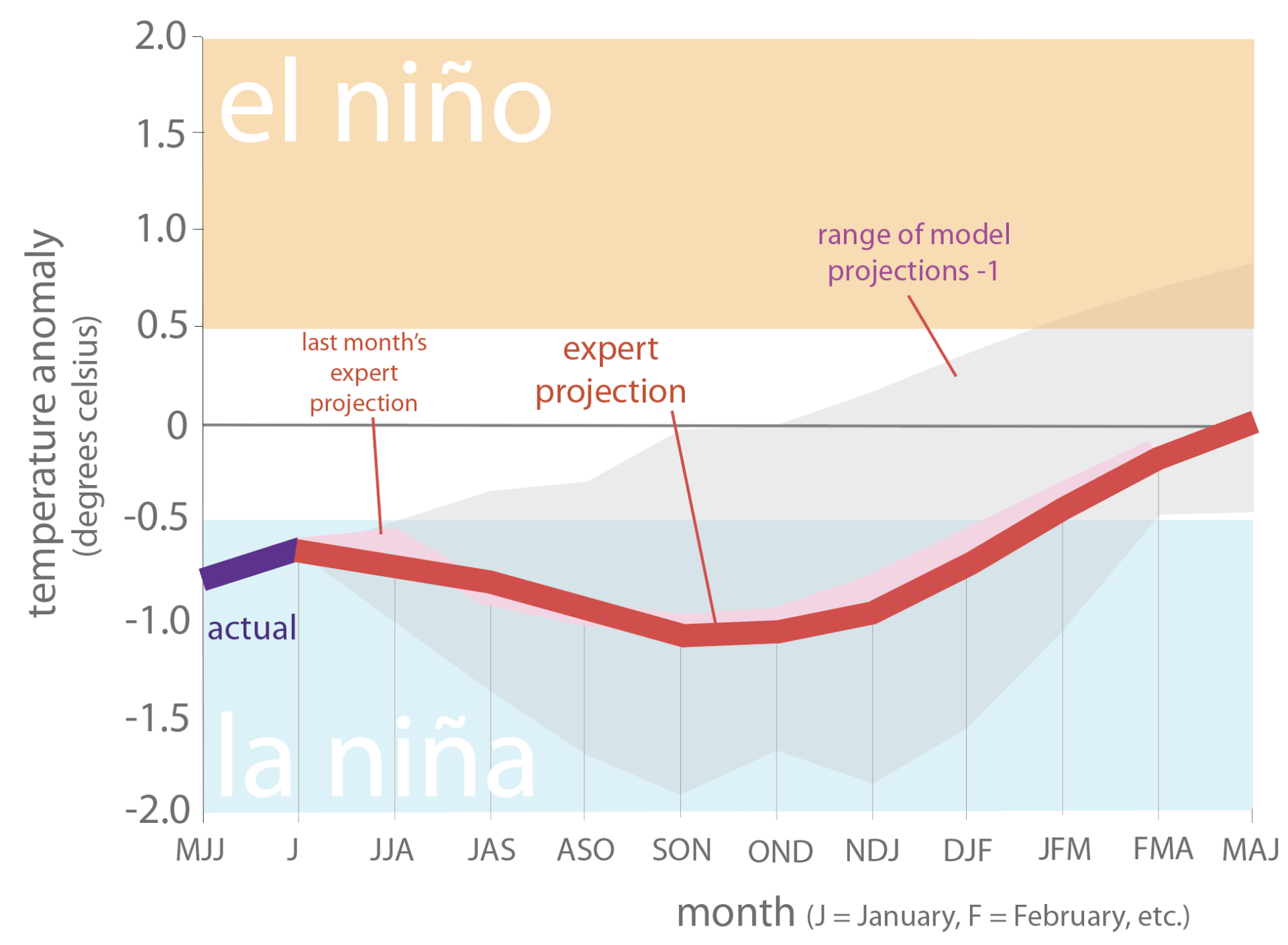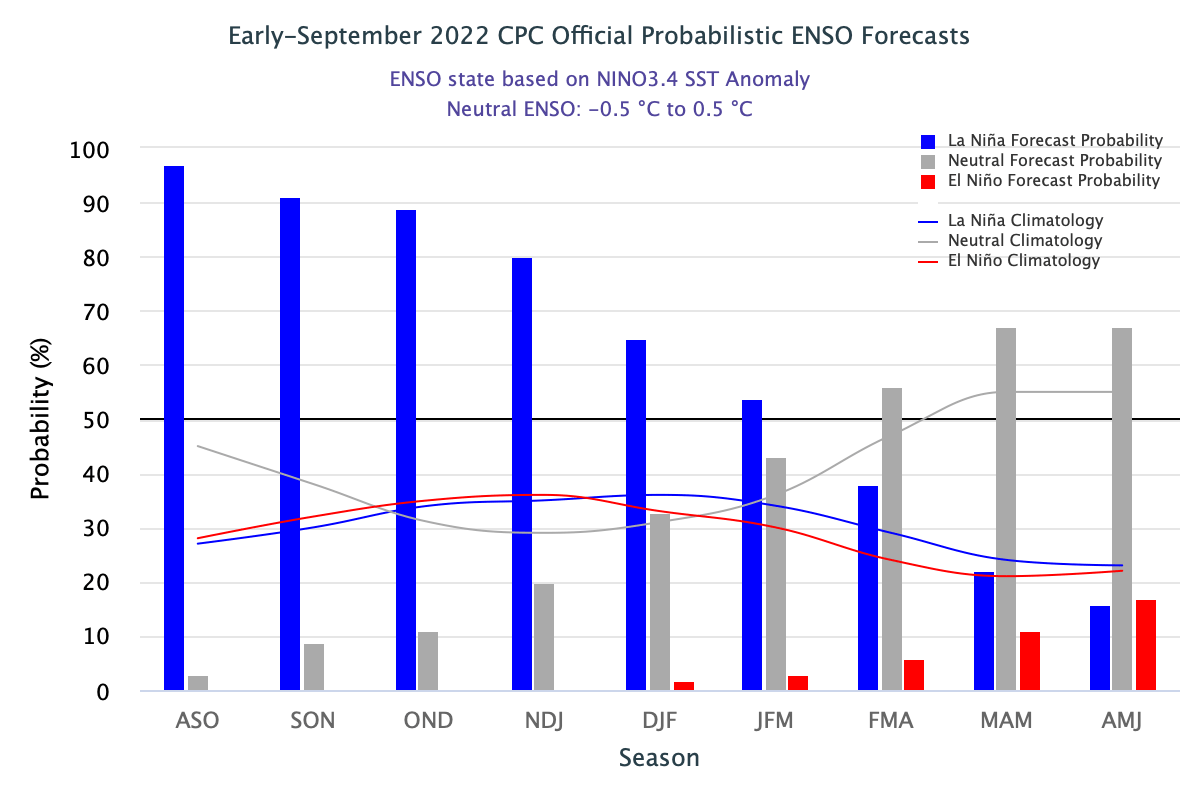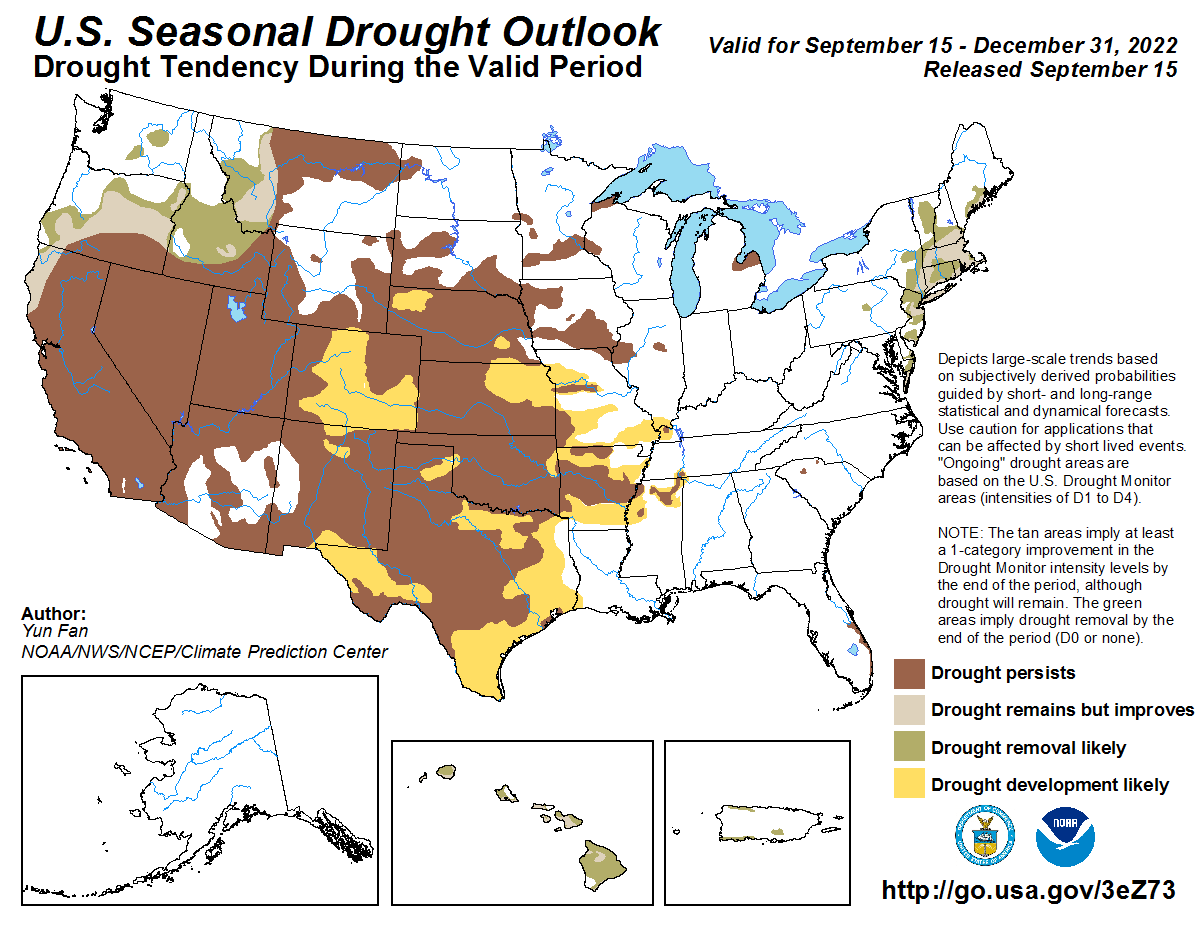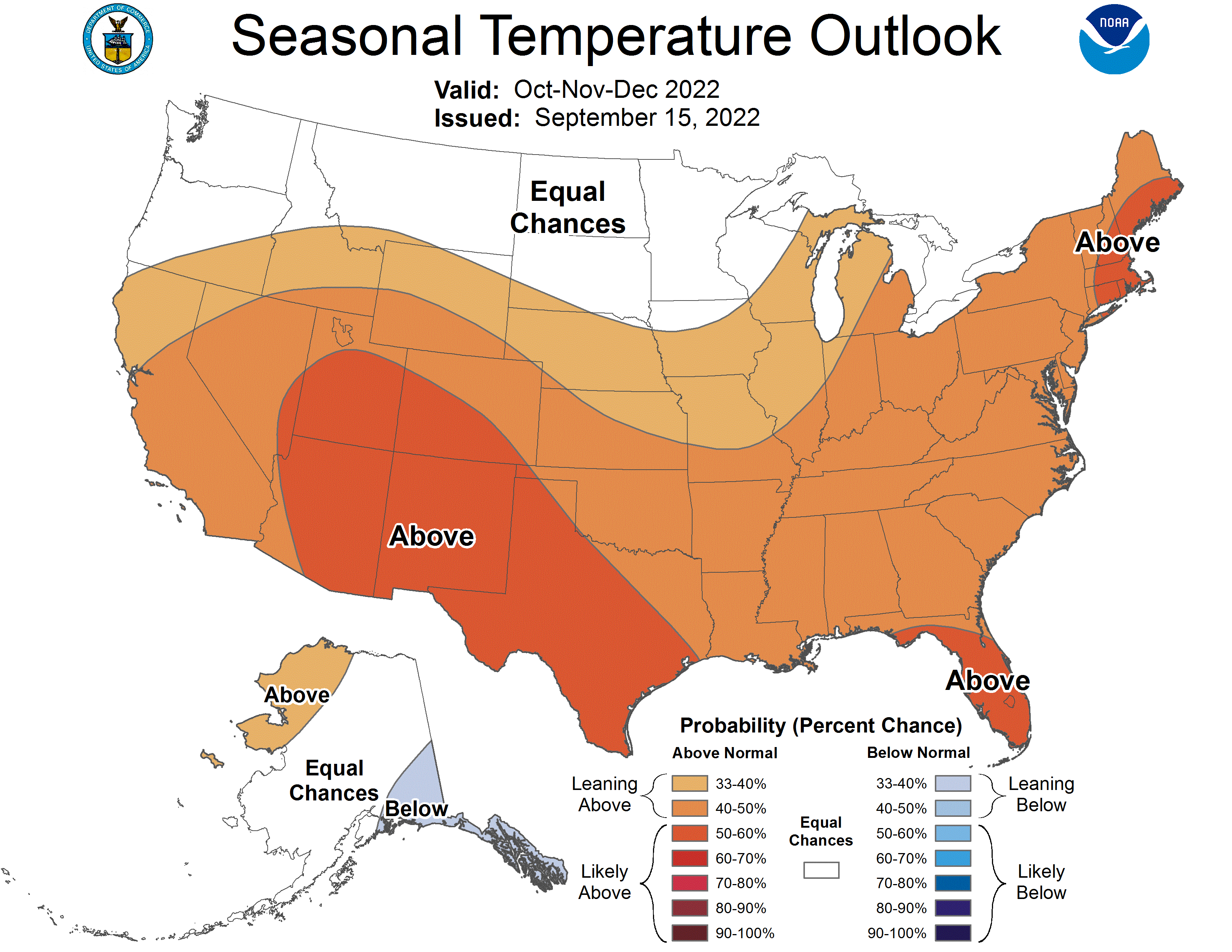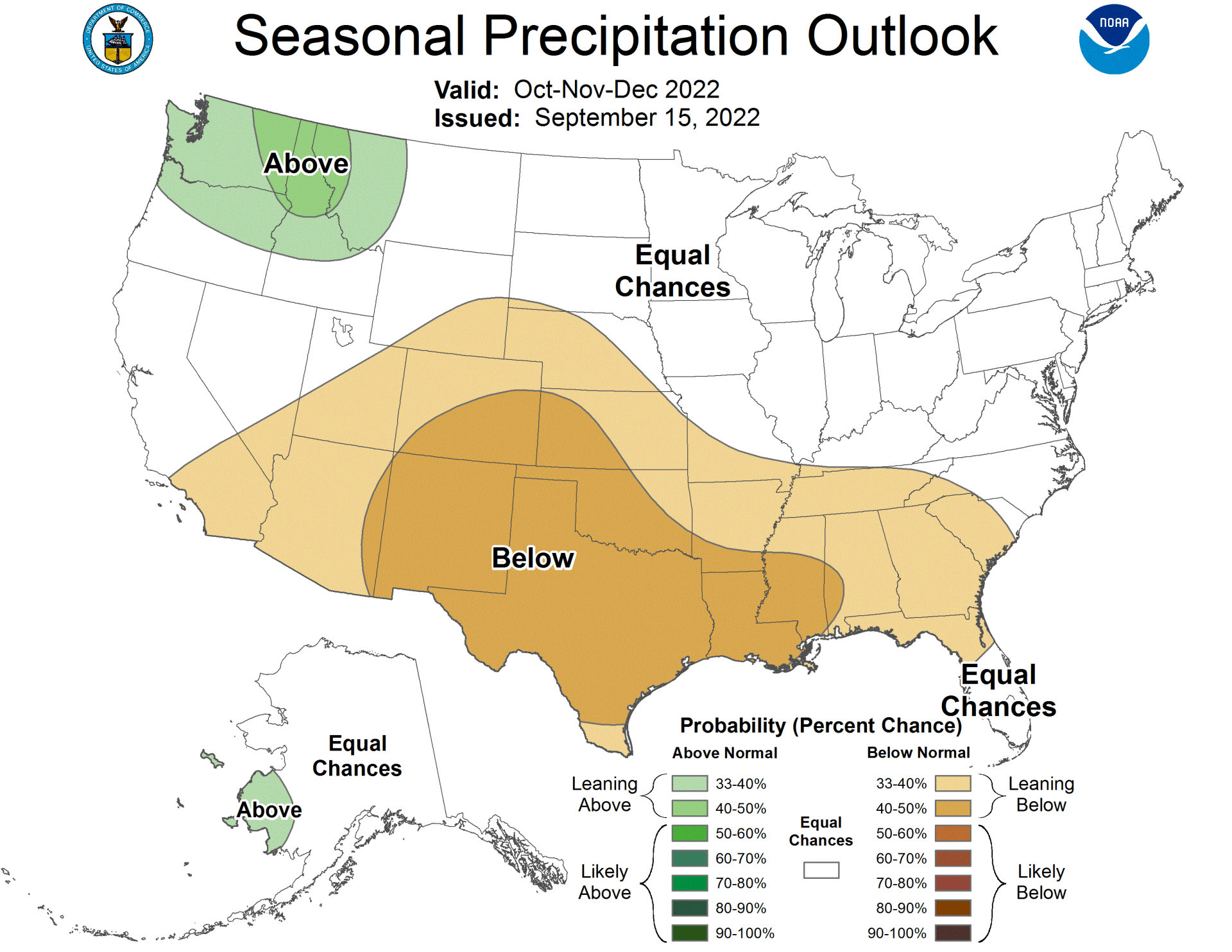SUMMARY:
- The amount of the state under drought decreased from 94.8% four weeks ago to 60.1% today
- 91% chance of hot and dry La Niña conditions to continue through November
- The Atlantic is churning with tropical storms
I wrote this article on September 22nd and 23rd, 2022.
Hurricane season, long dormant this year, has suddenly kicked off with a total of nine named storms, three hurricanes (with Tropical Storm Ian expected to become a hurricane soon), and one major hurricane (with Ian expected to be a major hurricane, Figure 1a) so far. Fiona hit Canada as a post-tropical storm with the lowest pressures ever detected (Figure 1b). Tropical Storm Hermine was interesting in that it formed just off the west coast of Africa, one of the few tropical storms to form that far east in the Atlantic (Figure 1c). As of Aug. 4, the National Oceanic and Atmospheric Administration (NOAA) still expects 14 to 20 tropical storms, 6 to 10 hurricanes, and 3 to 4 major hurricanes.
Figure 1a: Projected path of Ian as of September 25, 2022 (graph from NOAA). S = storm, H = hurricane, and M = major hurricane.
Figure 1b: Path of Hurricane Fiona (Wikipedia).
Figure 1c: Path of Tropical Storm Hermine (Wikipedia).
Over the past 30 days, much of the state saw more than 2 to 3 inches of rain, with less than 2 inches falling in the northern and far western parts of the state (Figure 2a). Much of the mid-to-upper Gulf Coast saw more than 5 inches of rain, with areas in and around Corpus Christi seeing more than 10 inches (Figure 2a). About a third of the state received 1.5 times or more than normal rainfall, while the rest saw less, sometimes substantially less, than normal amounts of rainfall (Figure 2b). Rain over the past 90 days — a big driver for drought conditions — remains below normal for almost the entire state except for parts of Far West Texas and the Lower Rio Grande Valley (Figure 2c).
Figure 2a: Inches of precipitation that fell in Texas in the 30 days before September 22, 2022 (modified from source). Note that cooler colors indicate lower values and warmer indicate higher values. Light grey is no detectable precipitation.
Figure 2b: Rainfall as a percent of normal for the 30 days before September 22, 2022 (modified from source).
Figure 2c: Rainfall as a percent of normal for the 90 days before September 22, 2022 (modified from source).
The amount of the state under drought conditions (D1–D4) decreased from 94.8% four weeks ago to 60.1% today (Figure 3a), with drought conditions improving across much of the state (Figure 3b). Extreme drought, or worse, has decreased from 62% of the state to 8%, with exceptional drought decreasing from 26% of the state to less than 1% (Figure 3a). In all, 78.8% of the state remains abnormally dry or worse (D0–D4; Figure 3a), down substantially from 97.2% four weeks ago.
Figure 3a: Drought conditions in Texas according to the U.S. Drought Monitor (as of September 20, 2022; source).
Figure 3b: Changes in the U.S. Drought Monitor for Texas between August 23, 2022, and September 20, 2022 (source).
The North American Drought Monitor, which runs a month behind, continues to show drought over much of the western United States (Figure 4a). Precipitation over much of the Rio Grande watershed in Colorado and New Mexico over the last 90 days was higher than normal, except for the Sacramento Mountains (Figure 4b).
Conservation storage in Elephant Butte Reservoir — an important source of water for the El Paso area — remained the same at 5.3% full as last month (Figure 4c), slightly above historic (since 1990) lows.
The Rio Conchos Basin in Mexico, which confluences with the Rio Grande just above Presidio and is the largest tributary to the Lower Rio Grande, is now out of drought (Figure 4a). Combined conservation storage in the Amistad and Falcon reservoirs increased from 22.7% last month to 31.2% full today, about 22 percentage points below normal for this time of year (Figure 4d). Reservoir levels are up as a result of storm systems that have passed through the area.
Figure 4a: The North American Drought Monitor for August 31, 2022 (source).
Figure 4b: Percent of normal precipitation for Colorado and New Mexico for the 90 days before September 22, 2022 (modified from source). The red line is the Rio Grande Basin. I use this map to see check precipitation trends in the headwaters of the Rio Grande in southern Colorado, the main source of water to Elephant Butte Reservoir downstream.
Figure 4c: Reservoir storage in Elephant Butte Reservoir since 2020 with the median, min, and max for measurements from 1990 through 2021 (graph from Texas Water Development Board).
Figure 4d: Reservoir storage in Amistad and Falcon reservoirs since 2020 with the median, min, and max for measurements from 1990 through 2021 (graph from Texas Water Development Board).
Basins across the state continue to have flows over the past week below historical 25th, 10th, and 5th flow percentiles (Figure 5a). Statewide reservoir storage is at 70.2% full as of today, up about 480,000 acre-feet from 68.7% a month ago and now about 11 percentage points below normal for this time of year (Figure 5b). Statewide reservoir levels had been tracking the declines we saw in 2011 but, with recent rains, have thankfully diverted from that path (Figure 5b). While many reservoirs in the eastern part of the state remain more than 90% full, a dozen or so in the Dallas-Fort Worth area are under 90% full, with a handful less than 80% full (Figure 5c). The “orange” reservoir northeast of Dallas (between 50 and 60% full) is accurately but perhaps unfairly orange since it, Bois D’Arc Lake, is a newborn and just started its initial inundation earlier this year (Figure 5c). The recent rains did not benefit reservoirs in the Waco area, which remain below normal by 30 percentage points for this time of year and have been below historic (since 1990) lows for the past three months (Figure 5d).
Figure 5a: Parts of the state with below-25th-percentile seven-day average streamflow as of September 21, 2022 (map modified from U.S. Geological Survey).
Figure 5b: Statewide reservoir storage since 2020 compared to statistics (median, min, and max) for statewide storage from 1990 through 2021 (graph from Texas Water Development Board).
Figure 5c: Reservoir storage as of September 22, 2022, in the major reservoirs of the state (modified from Texas Water Development Board).
Figure 5d: Hydrograph of the month—Reservoir storage for the Waco area reservoir (Waco; graph from Texas Water Development Board).
Sea-surface temperatures in the Central Pacific that in part define the status of the El Niño Southern Oscillation continue to reside in La Niña conditions but have warmed slightly (Figure 6a). This month’s projection is slightly cooler than last month’s, suggesting that La Niña conditions will remain through the fall and early winter (Figure 6a). Accordingly, we remain under a La Niña Advisory. Projections of sea-surface temperatures suggest a 91% chance of remaining in La Niña conditions for September-November with a 54% chance of neutral conditions reigning in January-March (Figure 6b).
Figure 6a. Forecasts of sea-surface temperature anomalies for the Niño 3.4 Region as of August 19, 2022 (modified from Climate Prediction Center and others). “Range of model predictions -1” is the range of the various statistical and dynamical models’ projections minus the most outlying upper and lower projections. Sometimes those predictive models get a little craycray!
Figure 6b. Probabilistic forecasts of El Niño, La Niña, and La Nada (neutral) conditions (graph from the Climate Prediction Center and International Research Institute).
The U.S. Seasonal Drought Outlook through October 2022 shows drought remaining in much of the state and returning in areas that received recent relief with only Far East Texas staying drought-free (Figure 7a). The three-month temperature outlook projects warmer-than-normal conditions for the entire state (Figure 7b), while the three-month precipitation outlook favors drier-than-normal conditions for the entire state (Figure 7c).
Figure 7a: The U.S. Seasonal Drought Outlook for August 18, 2022, through November 30, 2022 (source).
Figure 7b: Three-month temperature outlook for October-November-December 2022 (source).
Figure 7c: Three-month precipitation outlook for October-November-December 2022 (source).

